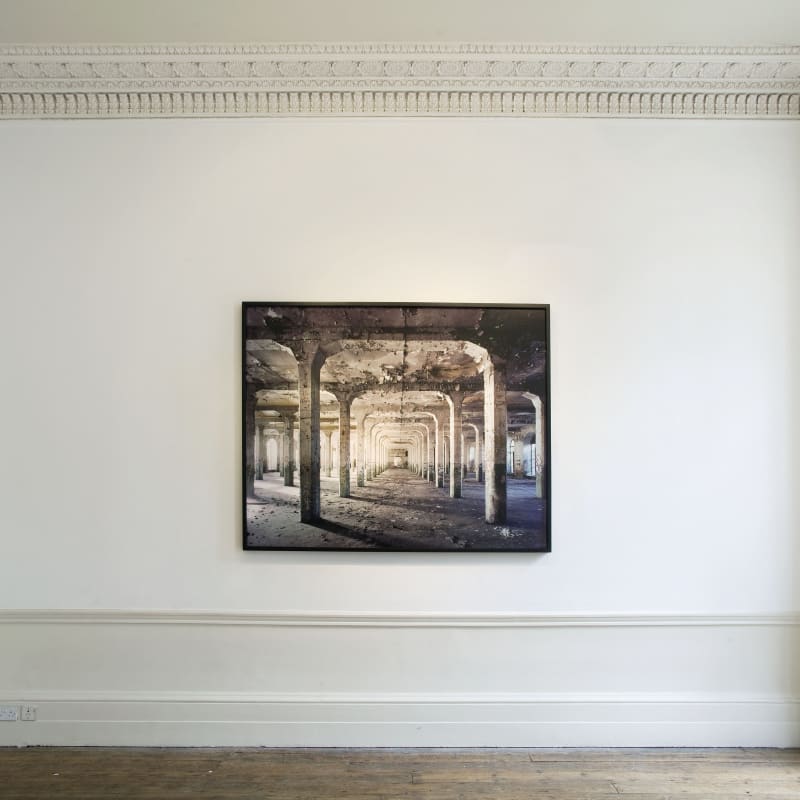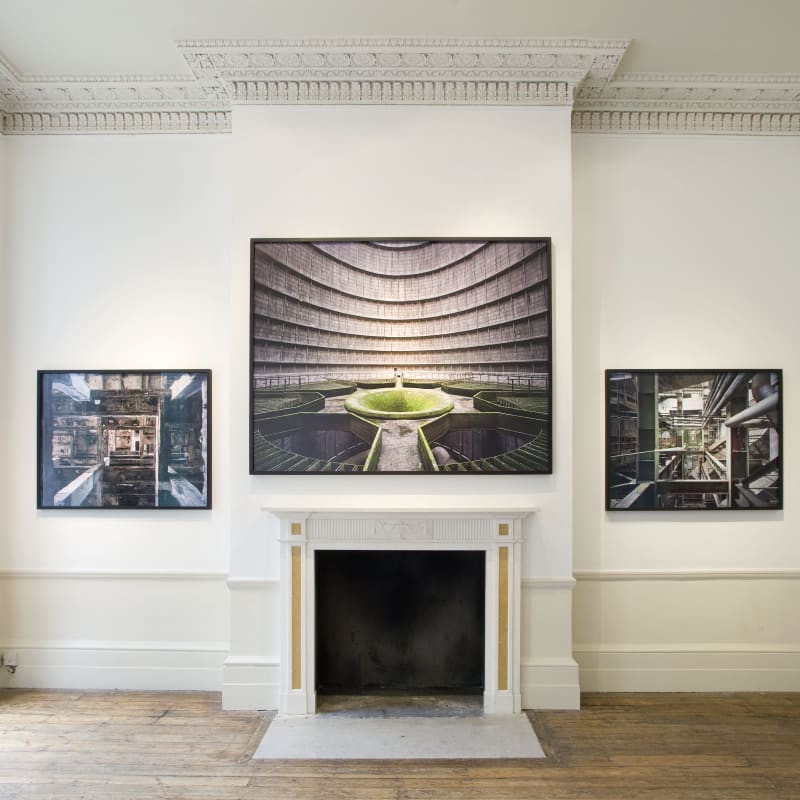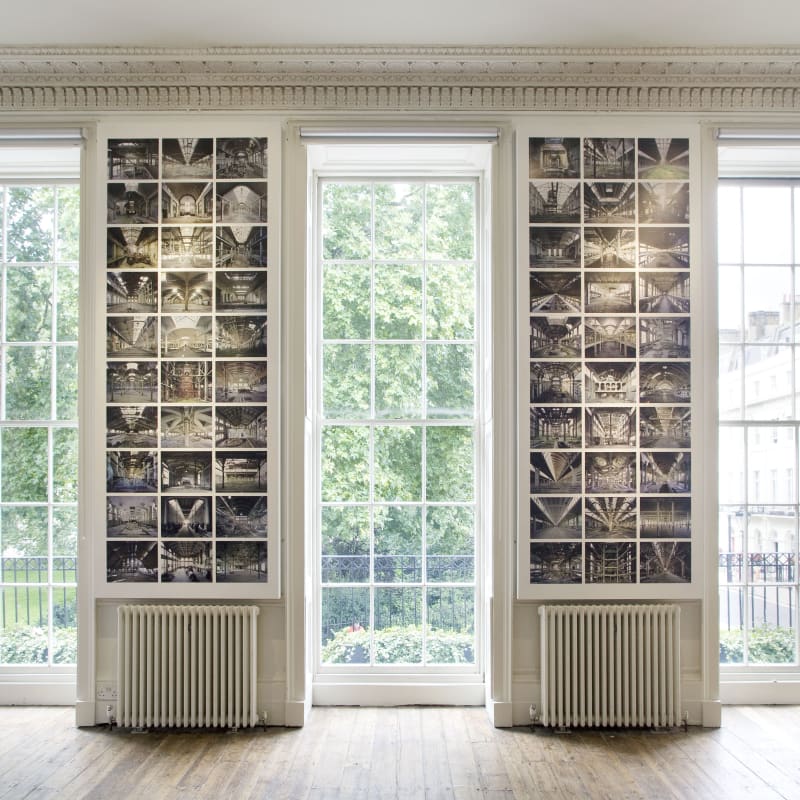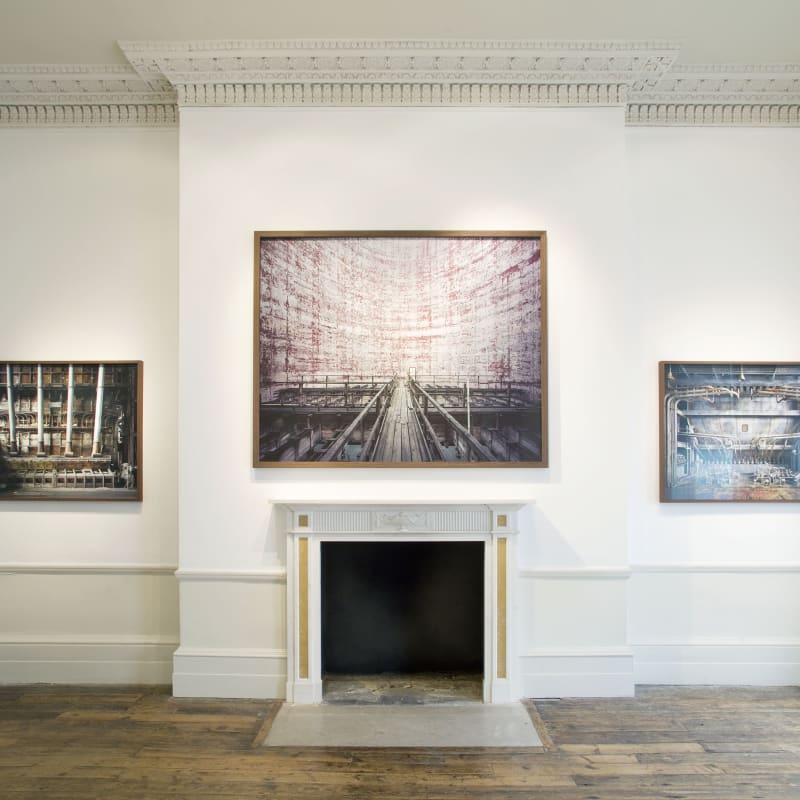Curated by Robert Sheffield
Architecture, history, economics, religion, social anthropology, photography, art; perfectionism, dedication, captivating, curiosity, beauty, daring, skill, talent, exceptional, original, bold and brave. These are just some of the words that come to mind when I look at the starkly beautiful works of Yves Marchand and Romain Meffre. When Tristan Hoare approached to me to curate a show of the work by Marchand and Meffre, I immediately said yes. I have admired their work for many years, have come to know the artists personally and respect them not only as exceptional talents in their field, but also as two young men who have achieved what they set out to achieve.
Although titled Industry, Yves Marchand and Romain Meffre’s photographs are a dedicated study of the human story. These images are evidence of our footprint on the earth, they document the relics we leave behind from our endeavours, the shape of the past, the feel of history, an impression of an era on our minds, the ghosts of men, modernist shapes rising out of the ground that were once beacons of technological achievement, testaments to our advancement. Now these cathedrals of industry lay shattered, broken and forgotten, tombs to man’s hubris, a reminder that nothing lasts forever, a reminder that we all will perish and rot one day.
By capturing images of our shared past, Marchand and Meffre not only explore the beauty of decay and our curiosity of the past. The work by the French duo also challenges us to explore the social issues of our time. Donald Trump, contemporary American politics, the advance of China as a world power – so much of our reality is about the rise and fall of industry. The architecture of Industry is a physical embodiment of the energy, reality and vision of an era. This architectural zeitgeist can tell us so much about who we were, who we are and who we are becoming. The story of industry is the story of modern history.
In addition to our industrial past, Marchand and Meffre have also taken an uncompromising look at the decay of American cultural heritage by focusing on the collapse of the once eponymous American movie theatre. The traditional movie theater was a potent symbol of American culture, a celebration of its values, a vision of the American Dream. A dream that was and is still propagated throughout the world via Hollywood. Now these once proud theatres are left to die in ignominy. They reflect a more throw-away culture, they ask difficult questions about how America preserves its heritage. What are American values now? American movie theatres were gaudy temples to the moving image and the American way of life. In their abandoned state, it is interesting to compare our current consumption of the image and marvel at how such previous reverence has given way to mass-media. How has our consumption of images changed? What does that tell us about the way we live now?
Yves Marchand and Romain Meffre were born in the suburbs of Paris in the 1980’s, they started photographing abandoned buildings on the outskirts of Paris and have gone on to photograph; the ruins of a once glorious Detroit, forgotten, disused movie theatres in America and Europe and the collapse of industry wherever their travels take them. Through all their work, the thread of decay, the shadows of a lost era flicker in the darkness, our curiosity is aroused and we are stunned to discover the new world of the past.
Using a large-format camera, Marchand and Meffre work together so that each image is a total collaboration (in the words of Marchand, ‘Sometimes we cannot remember who took which shot’), with a diligence and perfectionism that is reflected strongly in the work. Their commitment to ‘the shot’, lighting, angles and setting results in a series of breathtaking images. The quality of their work cannot be disputed, and they have added great value to the medium of photography. There are references to previous greats, such as Bernd & Hilla Becher and Andreas Gursky, yet their work remains clearly their own.
I leave you with a quote from Romain Meffre: ‘We felt like archaeologists in temples. Even though the buildings are not religious, they express a belief in the future and in the system. They are cathedrals. They have a sort of naivety, a dream, an awareness of destiny that is a bit like religious belief.’ We owe these two young artists a debt. In saluting the past not only do they capture and preserve our history with dignity and respect, they make us question the way we live now.
– Robert Sheffield July 2017




